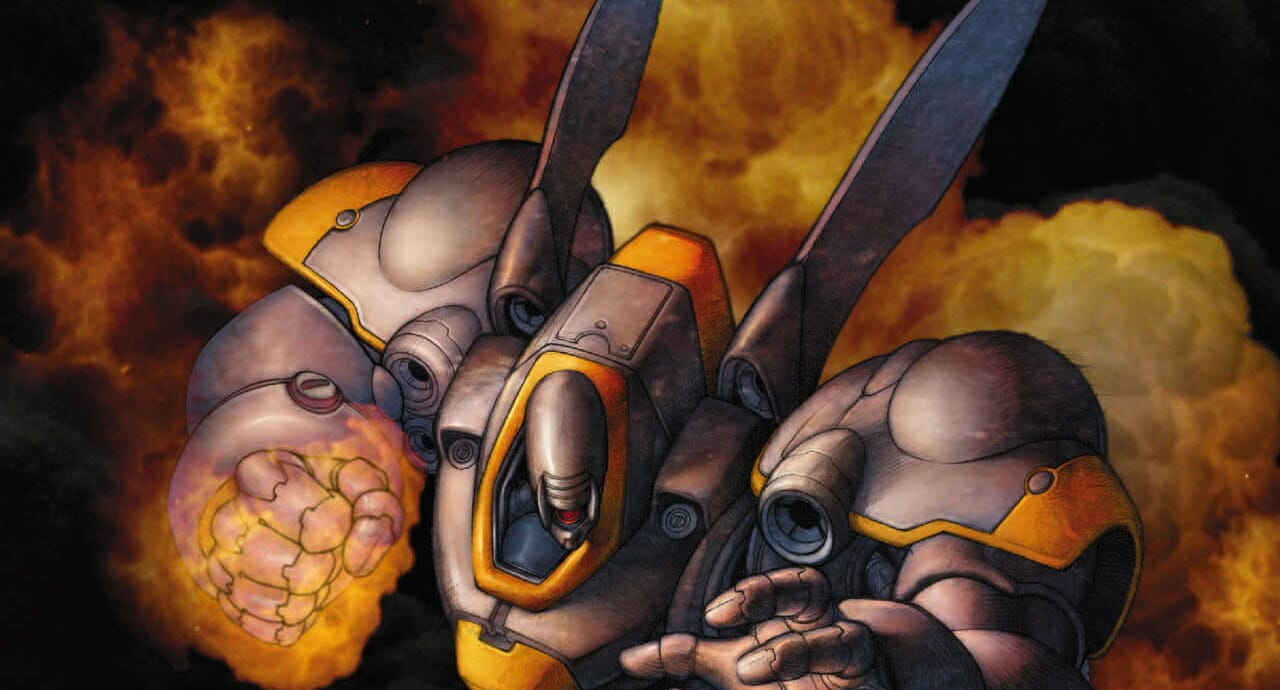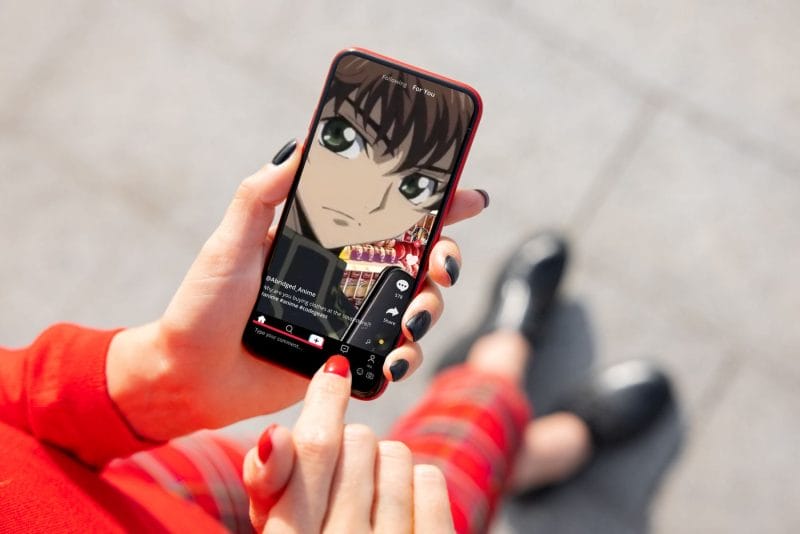The American first-person shooter (FPS) scene was wild in the 1990s. The experience exploded into prominence with a one-two punch from Id Software, with Wolfenstein 3D in 1992, followed by the landmark DOOM in 1993. Just three years later, the genre would take a quantum leap forward with Id’s Quake landing as the first fully 3D FPS. In the same year, 3D Realms delivered their own shot across the bow with Duke Nukem 3D, which showed unrivaled interaction thanks to the company’s flagship Build engine.
It is during this period that Washington-based Monolith Productions entered the scene. In 1997, the developer released Blood, an FPS built in the Build engine. Like Duke Nukem 3D, Blood featured 3D environments, with enemies and items drawn in 2D sprites. The horror-themed shooter quickly found a cult following, thanks to its memorable lead, dark sense of humor, and creative weaponry like the Voodoo Doll and lnsect-a-Cutioner. It was also notably a much more challenging game than its contemporaries, which proved to be a draw among the hardcore gaming set.
Like Blood, Monolith’s first venture into fully-3D shooters proved to be very much like what came before, and unlike anything else to grace the genre up to that point. While many of the studio’s contemporaries focused on translating their Dungeons & Dragons games into fast-paced action, or making homages to trashy B-movies, Monolith attempted something truly unexpected.

They set out to make Shogo: Mobile Armor Division: a fully 3D FPS with a distinct anime flair. Unlike Shadow Warrior, which offered light sprinklings of anime tropes alongside kung-fu film tropes, Shogo proudly wore its anime influences on its sleeve. And unlike DOOM, Duke Nukem, or Blood, the title placed a great emphasis on its storytelling, going as far as to feature multiple endings.
The title beat Valve’s Half-Life to market by a month and even treaded similar ground. It just …wasn’t as good.
Shogo: Mobile Armor Division is a mess of a game, but quickly earned a dedicated fanbase due to how unlike any of its peers it was. In short, it’s the distillation of what anime was to western audiences in the mid-nineties, taking particular inspiration from the mecha genre. The game’s official website, notes that its primary inspirations were Appleseed and Patlabor, and it was hard to miss its reverence for the Gundam and Macross franchises.
The team even went as far as to produce their own version of an anime opening with their graphical engine, complete with a cheesy J-pop track with uplifting lyrics that clash with all the gibbing and explosions. It’s a sequence that says everything: the game you’re about to play is anime, as experienced by a team of huge American turbo-nerds who fancy themselves as comedians and love ultra-violence. It’s immature and over-the-top, but it also takes its story seriously when it isn’t being playfully dumb.
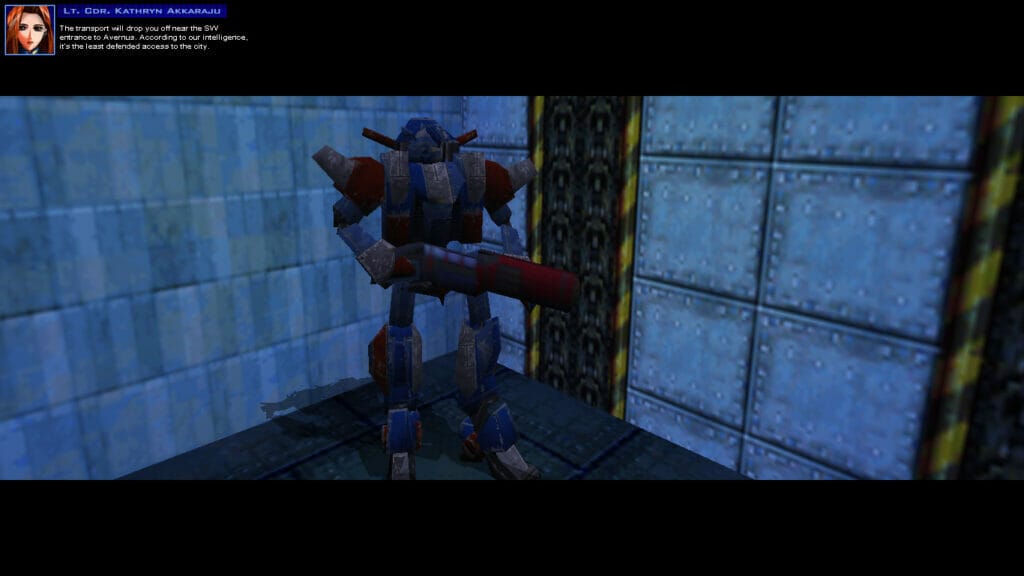
Shogo is set in the midst of a devastating interstellar war for a planet known only as Cronus. The planet is rich in a special substance known as Kato, which is used in the production of weapons and as fuel for faster-than-light travel. Four factions currently vie for this resource-rich rock: the United Corporate Authority (UCA) and Shogo Corp syndicates, Cronus’s military faction the CMC, and a terrorist organization known as The Fallen. Players step into the shoes of Sanjuro Makabe, a UCA mecha pilot who lost his brother and his girlfriend in the war. With revenge on his mind, he sets forth with the goal of ending the war in bloody fashion.
He’s also dating his late girlfriend’s sister. Sanjuro describes the situation as “complicated.”
Despite its heavy source material, Shogo delivers its narrative with its tongue firmly in its cheek for much of the campaign. Players will square off against their own rival in mini-boss battles several times through the campaign, though it quickly becomes apparent that he probably wouldn’t know which end of the blaster is the shooty end. Other times, they’ll embark on side missions that toy with player expectations, like a substory that ends with a tawdry joke about cunnilingus. The tone oscillates between the serious and the silly, which leads to a delivery that could be likened to 1991 comedy OVA Burn Up!
As each chapter unfolds, players discover new wrinkles in the plot as it becomes apparent that things are more than they seem. In the later chapters of the game, it’s even possible to join a rival faction, which alters the ending scenario and completely flips the scripts on the established heroes and villains.
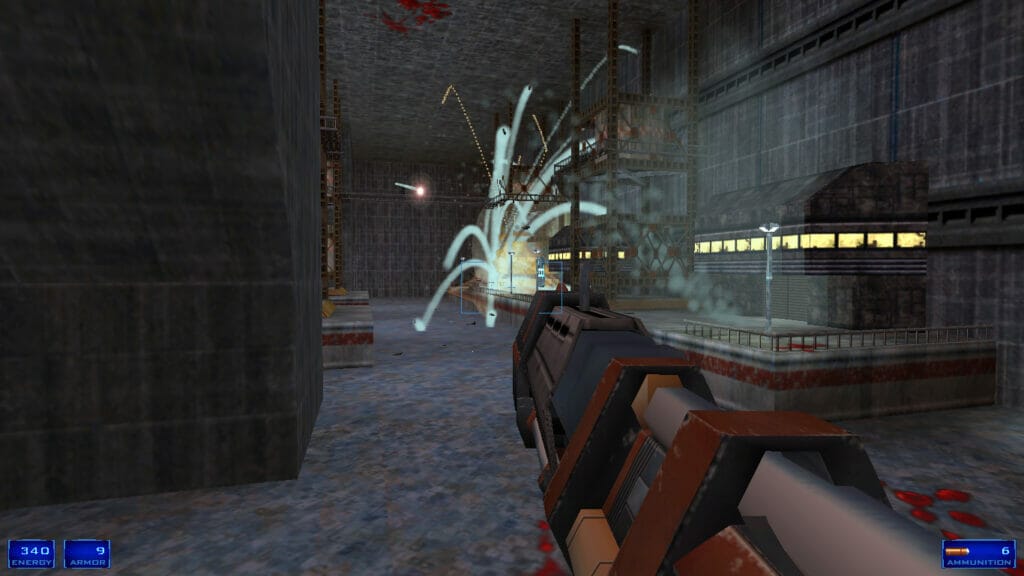
Shogo was an ambitious project, but the game’s lead designer Craig Hubbard has not shied away from commenting about how unprepared they were, citing it as “a grim reminder of the perils of wild optimism and unchecked ambition.” The game had a branching narrative, tons of dialog, action heavy play, several maps to explore, and experimental design concepts. For example, the critical hits system would sometimes have you do extra damage with your shot – and the enemy could do the same to you. What actually triggered said crits is not clear to this day. Granted, these are but a few of the many experimental features that were highly ambitious, though they did not quite succeed in execution.
While Shogo: Mobile Armor Division’s core concepts would be ideal for an immersive experience like System Shock, Monolith’s wheelhouse was firmly in the realm of classic-style FPS games. Granted, Shogo is a classic FPS that is so unforgiving due to numerous factors, from the messy development to the designers’ own desire to be mean to the player.
In their early days, Monolith were notorious for their lack of mercy toward the player. For example, in 1997’s Blood, the team placed cultist enemies throughout every level, typically around blind corners. Unlike most enemies, cultists fired on first hitscan, which allowed the units to damage players faster than they could react. In Shogo, this philosophy continued during the on-foot sections. In these segments, many of the enemy units aimed on hitscan, and many wielded powerful weapons. And, like in Blood, they were often stationed in awkward positions. That’s to say nothing of surprise encounters, like a rocket launcher wielding bruiser who is placed right behind a door that opens on entry to the immediate area. In many cases, death becomes inevitable—and comical, in a nihilistic way— as you’re expected to know these enemies are waiting ahead of time.
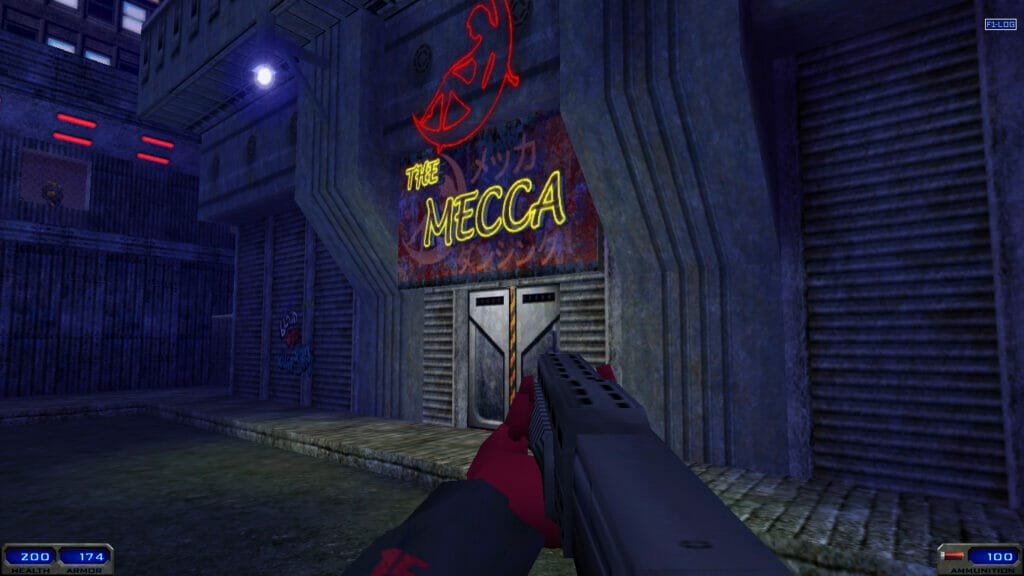
Indeed, the game actively punished players who approached the title like a standard FPS, to the point that it made the experience difficult to enjoy. Rather than blaze through levels with reckless abandon, players had to be slow, methodical, and utterly unafraid to partake in save scumming to make any real progress. They were able to take the enemy out as quickly as an enemy could take them out. YouTuber Mandalore Gaming described the experience as akin to playing a tactical shooter, noting that “even though you’re in a mecha setting, with fast movement and a lot of weapons, you have to play the game very carefully.”
Shogo has managed to live rent-free in the minds of gamers of a certain age, thanks in no small part to its unique vibe and countless anime inspirations. At the time of its release, few western studios would even dare to think about dreaming about toying with anime themes, let alone build an entire game that revels in them. While Sanjuro was still a hot headed gunman who made a handful of bad quips, the world he inhabited had a different feel from anything else at the time. Its sci-fi and cyberpunk trappings led to a sort of “proto-vaporwave” aesthetic, complete with glowing neon, city lights, Japanese text, and a healthy use of mood lighting.
Moody cityscapes sat beside gritty industrial areas that would be at home in Bubblegum Crisis or Megazone 23 . Little touches, like While the music and sounds were fairly standard for anime backtracks of the era (minus the metallic title screen theme), touches like glass dome vistas and detailed magazine racks helped to breathe life into the world, and greatly contributed to the atmosphere.
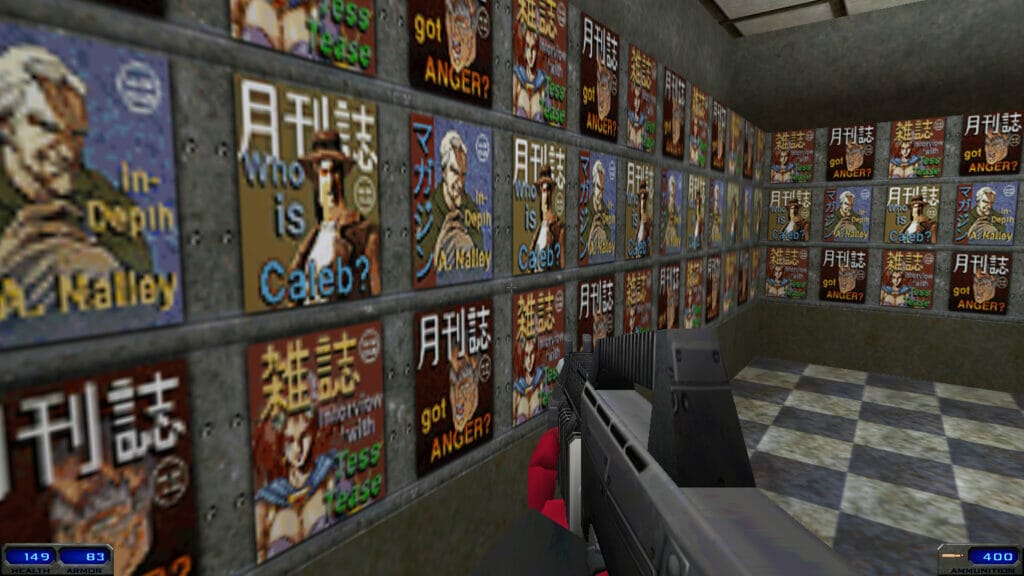
Battles, meanwhile, were spectacles, packed with particle effects, colored overlays, and even a handful of familiar sound effects to emphasize the action. Still, nothing can prepare players for the first time they’re spotted by an enemy, where a splash screen pops up depicting Sanjuro and his foe’s eyes locked in intensity, as speed lines rush along the background.
Shogo is a bizarre mixture of the edgy 90s FPS mixed with OVA anime conventions and style, and it works better than it should, even if actually playing the game can be frustrating. It was a genuine attempt at capturing every unique quality that could be found in popular anime of the era, which gave it a sense of soul that few of its contemporaries could achieve. That’s to say nothing about the countless overt references scattered throughout the game, including a number of really on-the-nose Neon Genesis Evangelion ad edits.
If you’d like to try the game yourself, you need to know three things. First, know that there are a lot of exposition cutscenes, due to the studio lacking the time to flesh out the game as they wanted. Second, you should pick up the GoG version, to keep it free of DRM. This is because of the third and final point: Shogo requires a fan-made Voodoo 2 wrapper due to the game’s odd original graphical requirements and a lack of support. The wrapper can be found with a bit of Googling, though it’s known to trigger false positives on a number of antivirus programs. Still, the dance is ultimately worth doing, as Shogo: Mobile Armor Division is a genuine oddity that’s well worth remembering.


